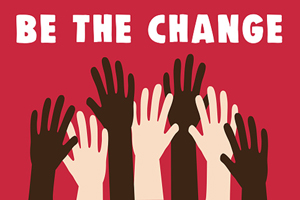
AACRAO staff members Kara Campbell and Fahduma Majid led a Protesting 101 webinar, moderated
by the AACRAO Black Caucus Chair Bianca Thompson-Owen. This webinar covered the basics of how to protest, for both high risk and low risk events.
The March on Washington
AACRAO’s Black Caucus,
the largest caucus at AACRAO, is inviting all AACRAO members to participate in the March on Washington on August 28, in person or virtually. The police killing of George Floyd triggered a protest movement across the country. As we continue to examine and mend the fabric of America
we will continue to find opportunities to take action.
For those who have never protested, taking action might be more easily said than done. If you have never attended a protest before, going to your first may be a daunting or even frightening prospect. With more videos emerging of police brutality at
the Black Lives Matter protests
nationwide, many of you first timers want to know: what exactly am I getting myself into?
Preparation for the event
Depending on if you are attending a high risk or a low risk protest--and the March on Washington is predicted to be a low risk type--you want to be adequately prepared. For both, making sure you have:
In the event of attending a high risk protest, you may also want to forgo contacts, bring a two day supply of medication in the case of arrest, and also googles to protect against chemical irritants.
Etiquette and safety
This varies depending on if you are a Black or non-Black protestor. Black protestors must be particularly cognizant of their surroundings, and avoid all interactions with police for their safety. The buddy system is key, as is staying with the main
protesting body.
Non-black protestors should be conscious of their goal in coming to the protest, and to consistently remember they are there as an ally, and not a spokesperson. Is every chant for you? Are you aware of your positionality in the movement?
Moving forward
This webinar is just one of many offerings for AACRAO members in preparation for involvement in diversity initiatives, and educational resources. Take this short survey as the Black Caucus explores other ways for members to get involved.
View the full webinar and resources today.